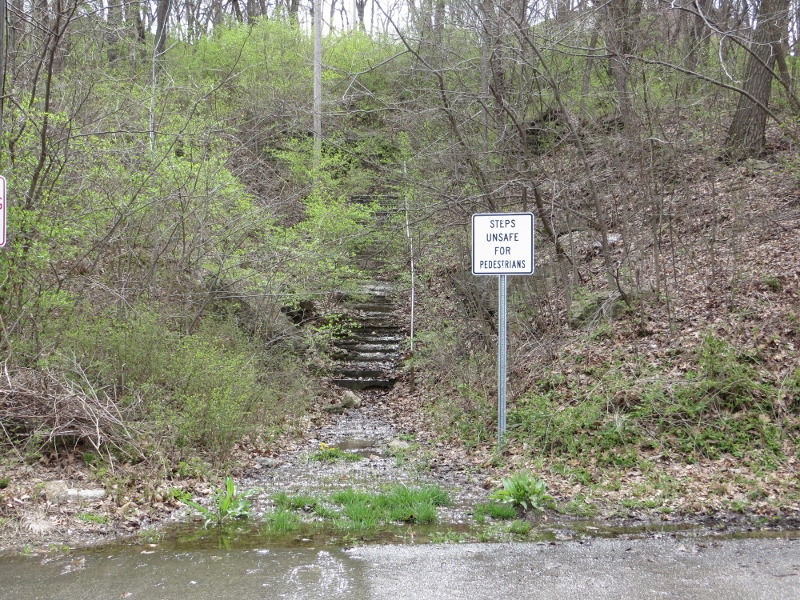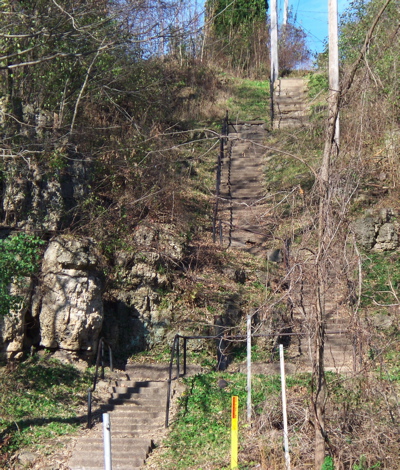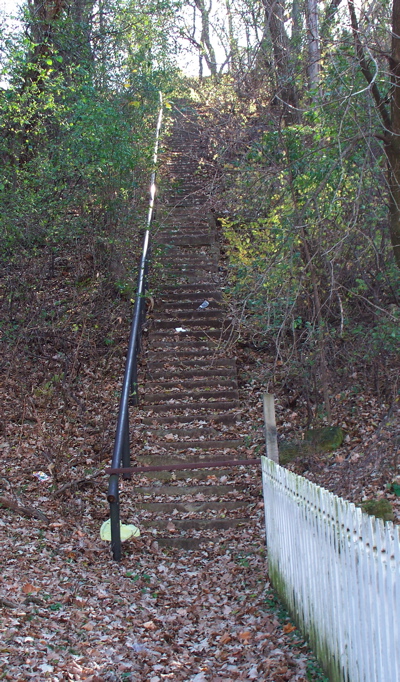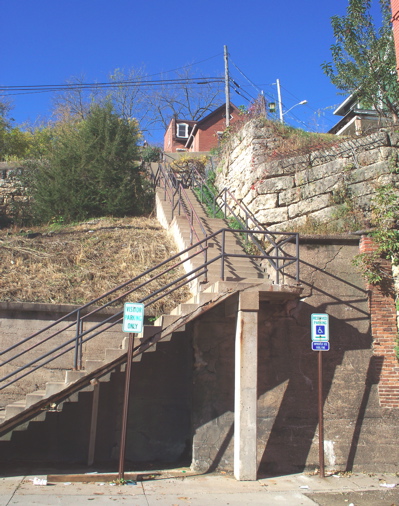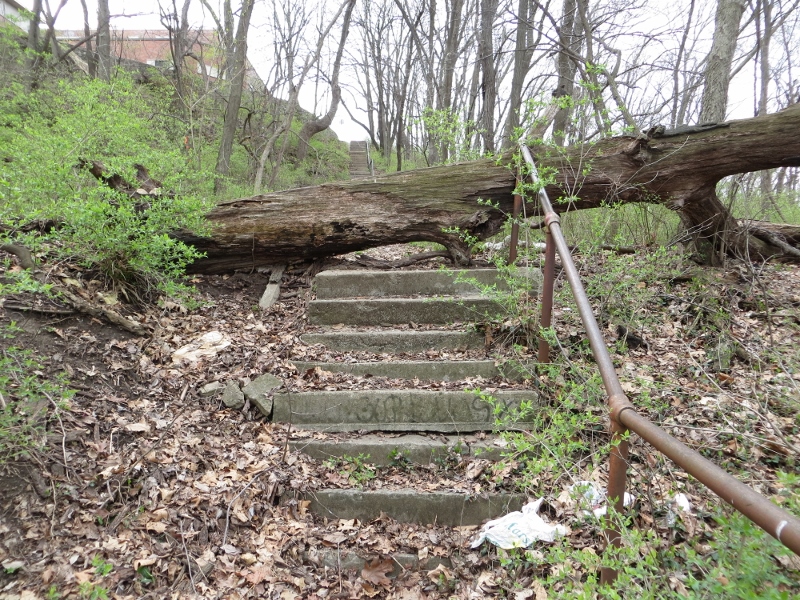Encyclopedia Dubuque
"Encyclopedia Dubuque is the online authority for all things Dubuque, written by the people who know the city best.”
Marshall Cohen—researcher and producer, CNN
Affiliated with the Local History Network of the State Historical Society of Iowa, and the Iowa Museum Association.
PUBLIC STAIRS: Difference between revisions
No edit summary |
No edit summary |
||
| Line 1: | Line 1: | ||
[[Image:publicstairs.gif|left|thumb|450px|Dubuque's hills led to the construction of public stairs. Photo Courtesy: http://www.dubuquepostcards.com]]PUBLIC STAIRS. | [[Image:publicstairs.gif|left|thumb|450px|Dubuque's hills led to the construction of public stairs. Photo Courtesy: http://www.dubuquepostcards.com]]PUBLIC STAIRS. In the early years of the twentieth century, Dubuque had twenty-five separate sets of public stairways of which the Madison Street steps (pictured) were considered the most elaborate. | ||
Stairs clinging precariously to the bluff at [[EAGLE POINT]] ran from Rhomberg Avenue to the Shiras Memorial in the park. Constructed between 1910 and 1920, the stairs were demolished during the widening of Rhomberg Avenue in the 1930s and the expansion of the [[EAGLE POINT LIME WORKS]]. | Stairs clinging precariously to the bluff at [[EAGLE POINT]] ran from Rhomberg Avenue to the Shiras Memorial in the park. Constructed between 1910 and 1920, the stairs were demolished during the widening of Rhomberg Avenue in the 1930s and the expansion of the [[EAGLE POINT LIME WORKS]]. | ||
Revision as of 20:29, 26 August 2018
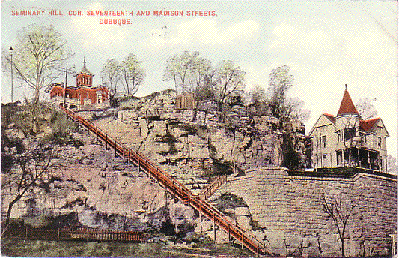
PUBLIC STAIRS. In the early years of the twentieth century, Dubuque had twenty-five separate sets of public stairways of which the Madison Street steps (pictured) were considered the most elaborate.
Stairs clinging precariously to the bluff at EAGLE POINT ran from Rhomberg Avenue to the Shiras Memorial in the park. Constructed between 1910 and 1920, the stairs were demolished during the widening of Rhomberg Avenue in the 1930s and the expansion of the EAGLE POINT LIME WORKS.
Remnants of stairs can be seen along Dodge Street and West Locust although use of the steps is generally no longer permitted.


